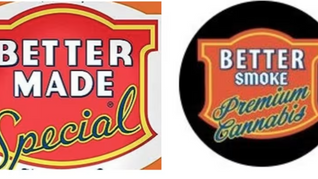State-mandated tests frequently find mold just below legal limits, WSJ analysis shows, suggesting that tainted samples are being cleared for sale

OG Article: here
View our Fair Use Policy: here
Watch the Live Show HERE
Watch the Commentary Here
A Wall Street Journal investigation has revealed troubling practices in the cannabis testing industry, specifically related to underreporting mold contamination in marijuana products. The analysis of over two million mold-testing results from nine states found a disproportionate number of samples showing mold levels just under the legal limits compared to those exceeding the threshold. Experts suggest this pattern indicates labs are underreporting contamination to clear tainted products for sale, potentially endangering public health.
Cannabis, often grown in humid conditions, is susceptible to dangerous molds like Aspergillus and Fusarium, which can lead to infections, allergic reactions, and even death, especially for marijuana users who are nearly four times more likely than non-users to suffer fungal infections. Despite this, the investigation found that growers, labs, and regulators in many states are failing to adequately monitor for harmful contaminants. For example, states like Colorado, Massachusetts, and Rhode Island were found to have testing labs that reported mold levels just below legal limits far more often than expected.
States have set thresholds for mold content in cannabis, usually at 10,000 colony-forming units (CFUs) per gram, but the lack of uniform testing methods and oversight allows labs to manipulate results. In Maryland, for instance, the state raised its legal mold limit by a factor of ten in 2021, leading to a proportional increase in mold concentrations reported by labs. Despite these challenges, some states like Michigan are taking steps to validate lab methods and ensure accurate testing through reference laboratories.
The report also highlights the potential for fraud and inaccuracy in cannabis testing. Labs that underreport contamination tend to receive more business, while those that report more mold contamination experience a significant decline in samples tested. This creates a market incentive for labs to pass products, even if they are unsafe, to maintain their client base. One example is Trulieve, a cannabis company that tested the majority of its samples at a lab with a notably low failure rate for mold. This same facility is tied to a lawsuit following the death of Lorna McMurrey, a 27-year-old worker who suffered a fatal asthma attack allegedly triggered by moldy cannabis dust.
The Occupational Safety and Health Administration (OSHA) and the Massachusetts Cannabis Control Commission investigated McMurrey’s death but found the facility’s air quality safe, despite not testing for mold. OSHA does not currently have standards for airborne mold levels in cannabis facilities. McMurrey’s family has since filed a wrongful-death lawsuit, and Trulieve has been fined for workplace safety violations.
As the legal cannabis industry continues to expand, the findings emphasize the need for stricter oversight, standardized testing, and consumer protection. Without these measures, tainted products could pose serious health risks, undermining the long-term viability of the industry. Claire Patterson, director of Michigan’s reference lab, underscored the importance of protecting consumers from knowingly contaminated products, stating that those selling unsafe cannabis should not have a place in the industry.





Comments